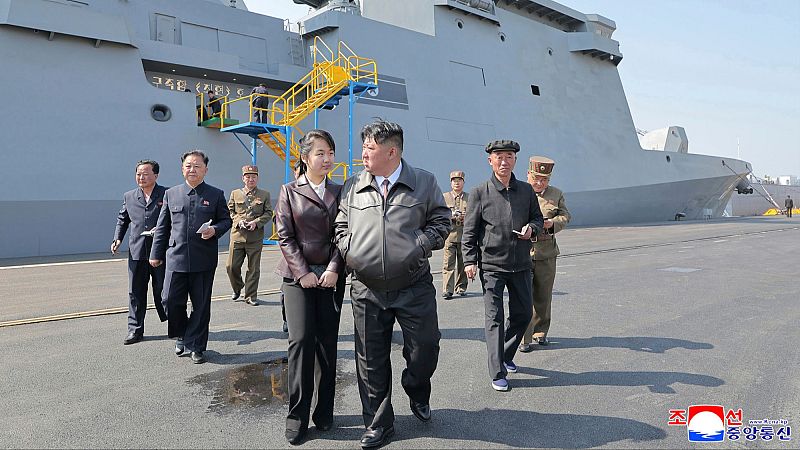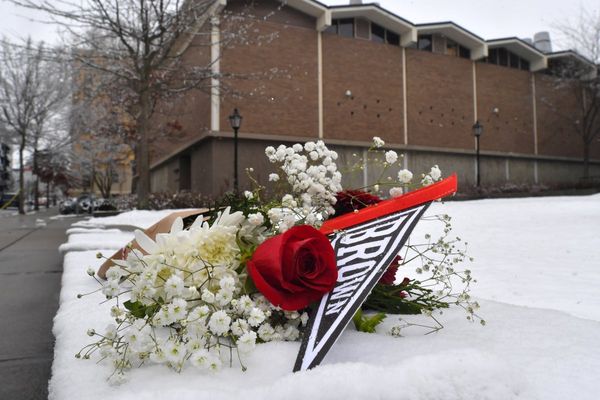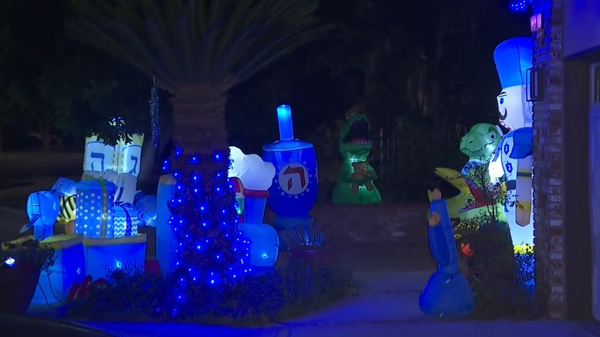
North Korean leader Kim Jong-un returned to the recently launched destroyer — the first such warship for Pyongyang — to observe a missile launch test, in another public display of the hermit country's push to arm its navy with nuclear weapons.
Kim and his daughter, Ju-ae, publicly unveiled the 5,000-tonne destroyer last week, equipped with what Pyongyang said were the most potent weapons systems built for a naval vessel.
During Friday's launching ceremony at the western port of Nampo, Kim called the ship's construction "a breakthrough" in modernising North Korea's naval forces. The destroyer was named Choe Hyon, after a North Korean general, politician and Korean War guerrilla fighter.
Experts say North Korea's first destroyer was likely built with Russian assistance. Moscow's know-how might have come in exchange for thousands of North Korean troops sent to fight on Russia's side against Ukraine following a landmark 2024 defence deal between the two.
While Pyongyang's naval forces lag behind those of South Korea, the destroyer poses a serious security threat, as it could bolster North Korea's attack and defence capabilities.
The state-run Korean Central News Agency said Wednesday that Kim watched the tests of the destroyer's supersonic and strategic cruise missiles, anti-aircraft missiles, automatic guns and electronic jamming guns earlier this week.
He "appreciated the ship's combination of powerful strike weapons and conventional defences and set tasks to speed up the nuclear arming of his navy," the report said.
During the ship's launching ceremony, Kim stated that acquiring a nuclear-powered submarine would be his next significant step in strengthening his navy.
Kremlin sharing its military tech?
An analysis of photos of the warship shows that its anti-air radar system is likely from Russia, said Lee Illwoo, an expert with the Korea Defence Network in South Korea. He said the warship's engine system and some of its anti-air weapons systems also likely came from Russia.
North Korea and Russia have been sharply expanding military and other cooperation in recent years, with Pyongyang supplying troops and conventional weapons to support Russia's war efforts against Ukraine.
The US, South Korea and their partners all share concerns that Moscow will likely in turn provide Pyongyang with high-tech weapons technologies that can enhance its nuclear program, as well as shipping other military and economic assistance.
In March, Pyongyang unveiled a nuclear-powered submarine under construction. Many civilian experts said at the time that North Korea may have received Russian technological assistance to build a nuclear reactor to be used in a submarine.
South Korea's spy agency also stated that North Korea won't likely be able to deploy a nuclear-powered submarine anytime soon without Russian support.
Lee said the deployment of a warship with an advanced radar system off North Korea's west coast could sharply bolster its air defence capabilities for Pyongyang.
South Korea, which has 12 destroyers, still vastly outpaces North Korea's naval forces. However, the Choe Hyon, which can carry approximately 80 missiles, can still pose a significant threat, as South Korea's navy has likely not prepared for such an enemy warship.







